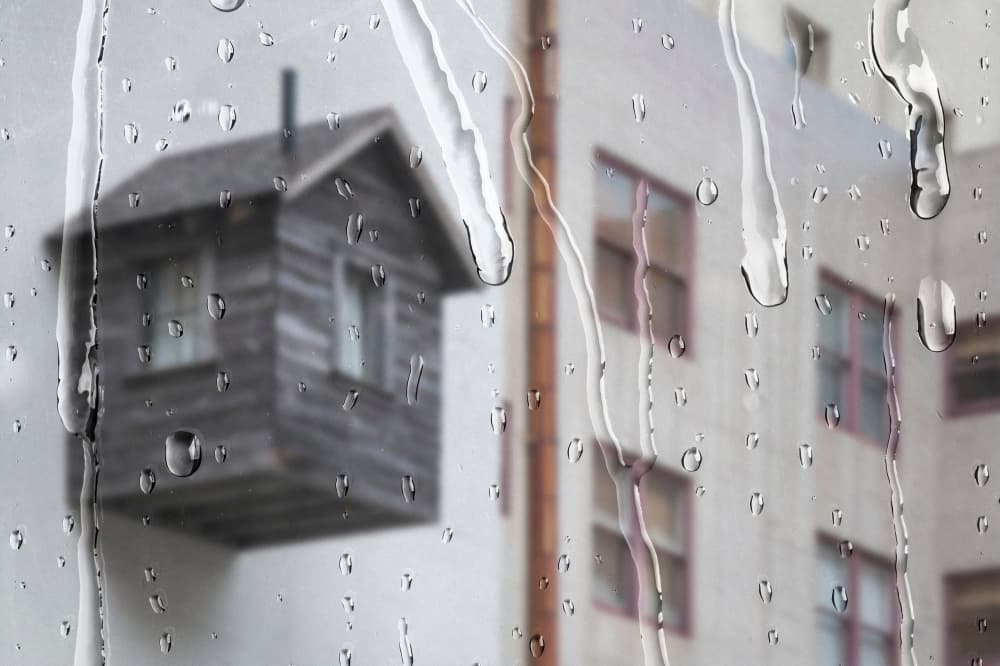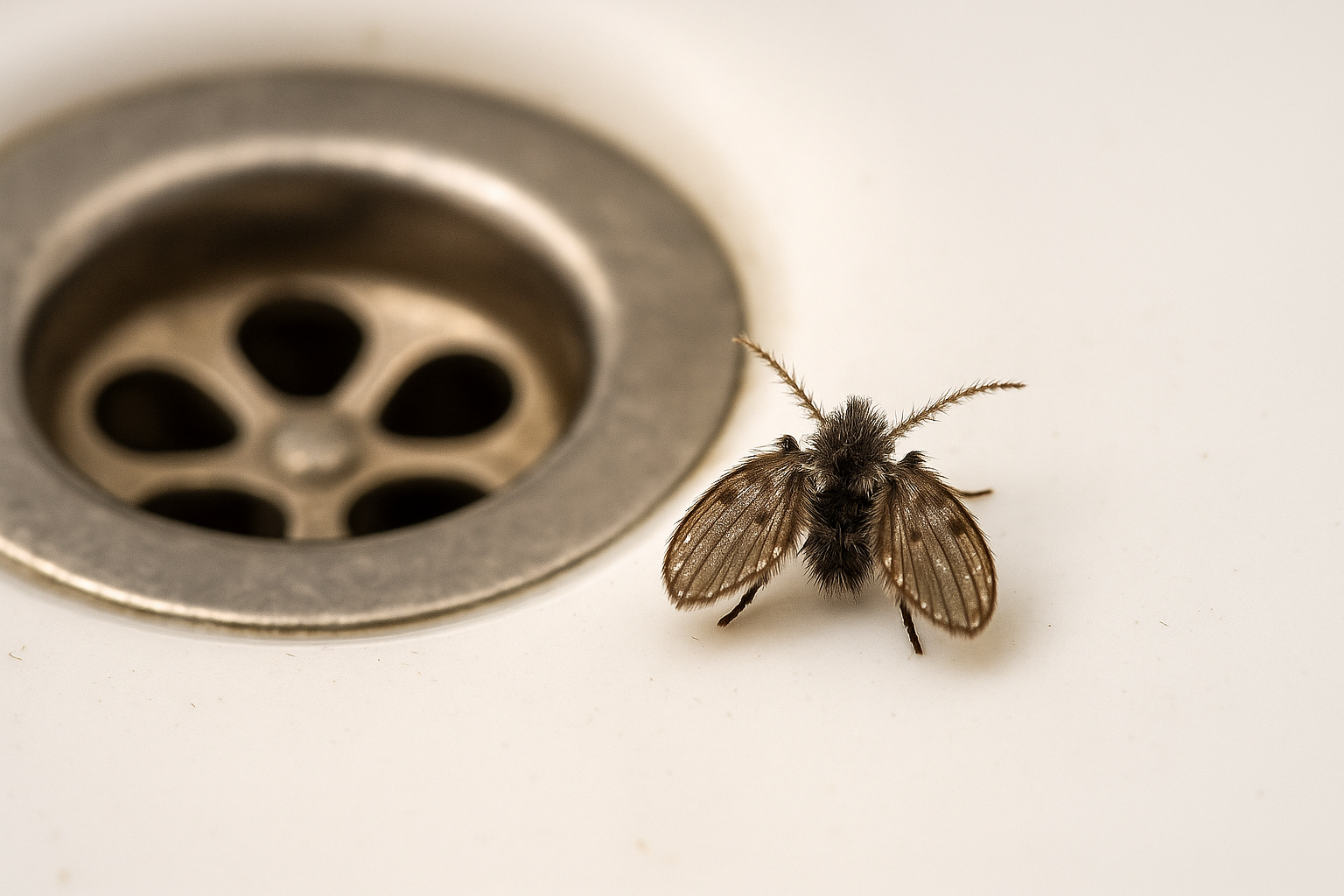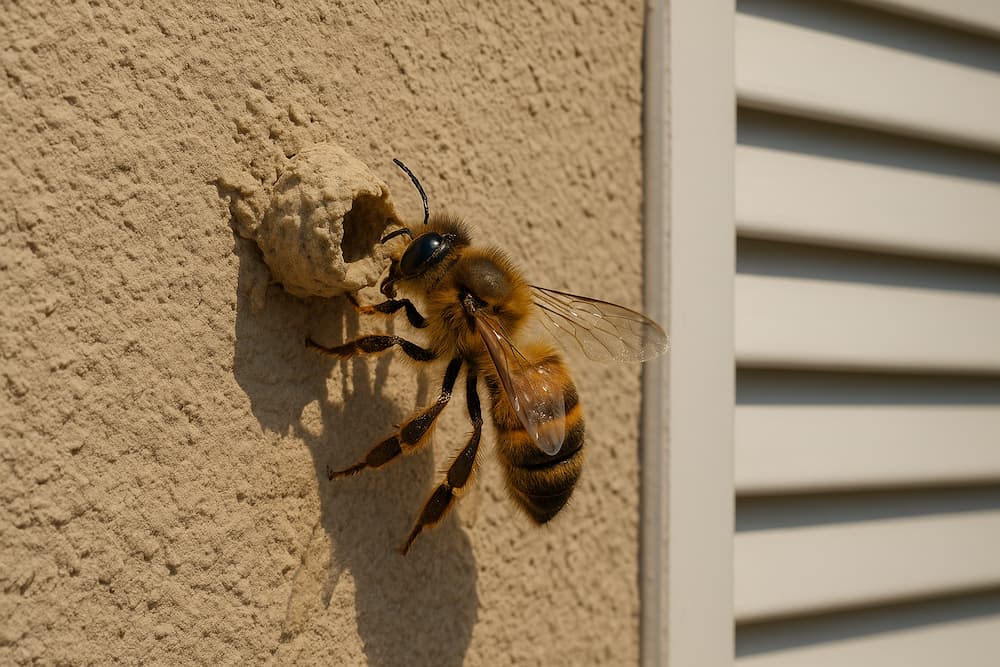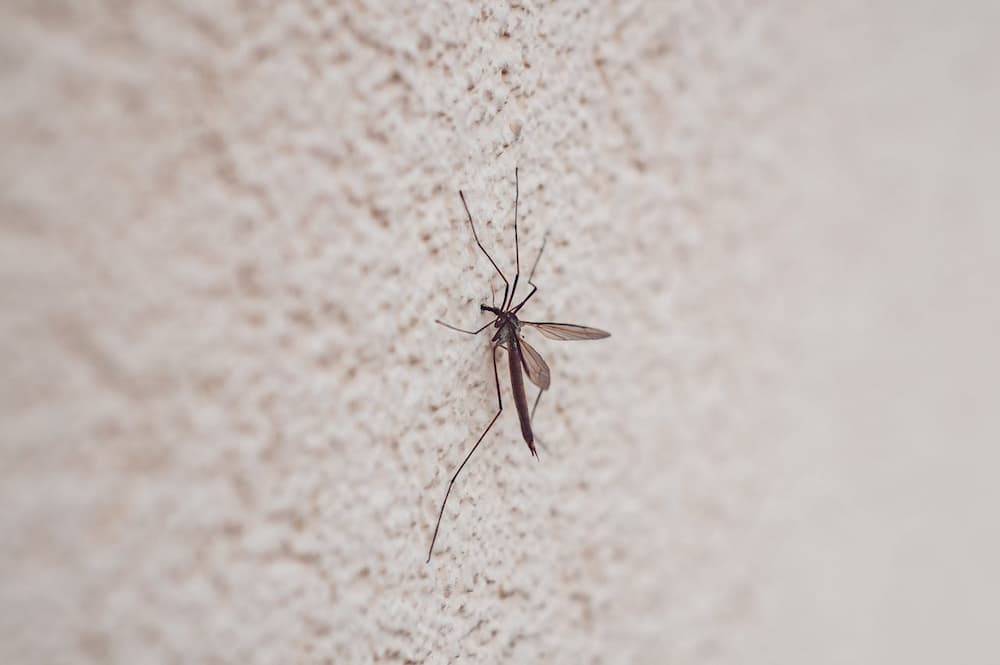Cuánto vive una mosca: Ciclo de Vida
¿Te has preguntado alguna vez cuánto vive una mosca? Este diminuto insecto que revolotea por nuestras casas y jardines tiene una vida mucho más interesante de lo que podrías pensar. En este artículo, te invitamos a conocer más sobre la vida de la mosca, desde su nacimiento hasta su última etapa.
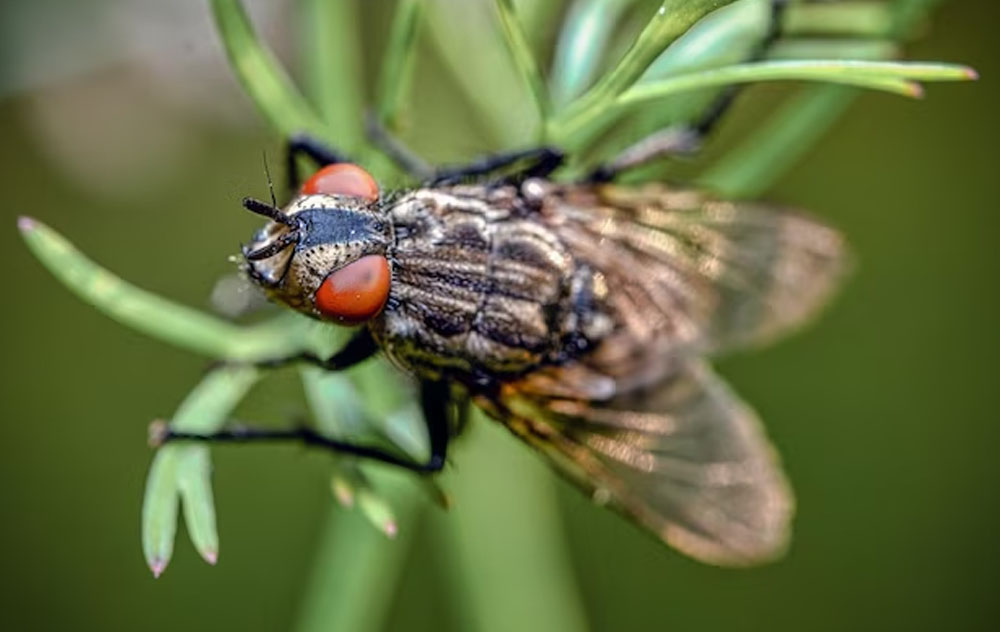
El Ciclo de Vida de una Mosca
La vida de una mosca comienza como un huevo diminuto. Tras la puesta, estos huevos se convierten en larvas que crecen alimentándose de la materia orgánica en la que fueron depositados. La fase de larva es seguida por la etapa de pupa, donde la mosca experimenta una transformación completa y se convierte en un adulto.
El tiempo que pasa desde que el huevo es puesto hasta que la mosca se convierte en adulto puede variar dependiendo de la especie y las condiciones del ambiente. Una vez que la mosca es adulta, su esperanza de vida también puede variar. Sin embargo, en promedio, una mosca vive entre 15 y 30 días.
De hecho, aunque parezca sorprendente, algunas especies de moscas pueden vivir hasta varios meses en condiciones ideales. Pero en la mayoría de los casos, y especialmente en el caso de la mosca doméstica, su vida no suele extenderse más allá de un mes.
Características de la Mosca Común o Doméstica
La mosca común, o mosca doméstica, es probablemente la especie de mosca que todos conocemos mejor. Estas moscas son de tamaño pequeño a mediano y su color es generalmente grisáceo. Además, tienen un par de alas y un par de antenas cortas.
La mosca doméstica se alimenta de una gran variedad de alimentos, pero principalmente de sustancias en descomposición y excrementos. También son conocidas por su habilidad para transmitir enfermedades debido a su tendencia a moverse entre la comida y los lugares insalubres.
En lo que respecta a la longevidad, las moscas domésticas generalmente viven entre 15 y 30 días. Sin embargo, en condiciones ideales, pueden llegar a vivir hasta dos meses.
Desde la Larva hasta la Mosca Adulta
El ciclo de vida de una mosca doméstica comienza con un huevo. La hembra de la mosca doméstica puede poner hasta 500 huevos en su vida, generalmente en lotes de 75 a 150 a la vez. Estos huevos son blancos y miden alrededor de 1.2 mm de longitud.
Después de un día, los huevos eclosionan en larvas, también conocidas como gusanos. Las larvas se alimentan y crecen rápidamente, y después de unos días, se convierten en pupas. Durante la etapa de pupa, la mosca se transforma en un adulto, un proceso que puede llevar de tres días a una semana.
Finalmente, la mosca emerge de la pupa como un adulto. Las moscas domésticas adultas viven de 15 a 30 días en promedio,
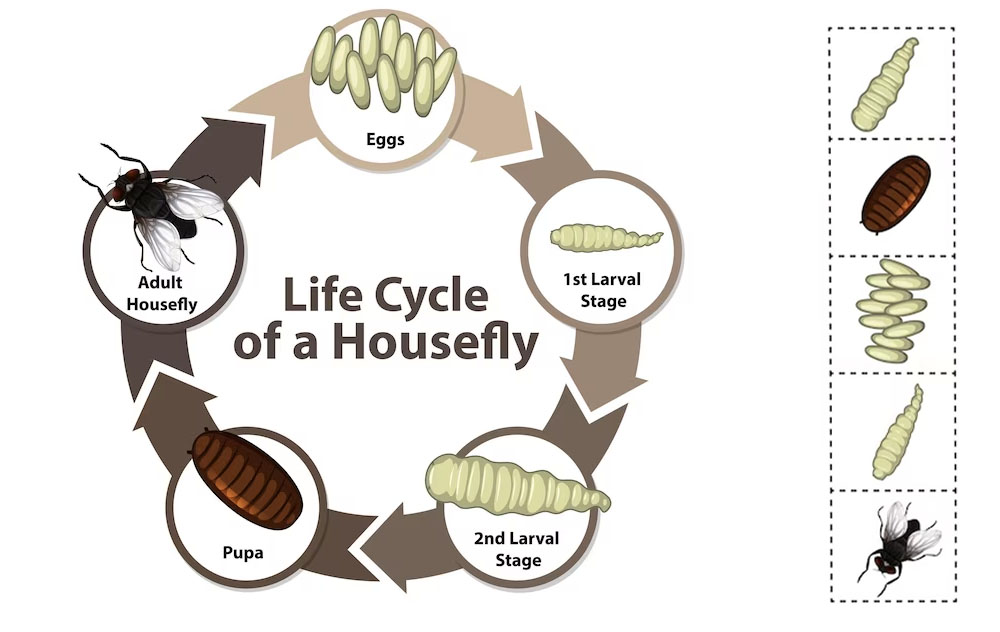
Factores que Afectan la Longevidad de una Mosca
No todas las moscas viven el mismo tiempo. La longevidad de estos insectos puede variar considerablemente dependiendo de diversos factores. Algunos de los más importantes son el ambiente y las amenazas predadoras.
Cada especie de mosca tiene sus propias adaptaciones para sobrevivir en diferentes condiciones ambientales. Algunas especies pueden tolerar temperaturas extremas, mientras que otras prefieren ambientes más templados. Además, la disponibilidad de alimento también juega un papel crucial en la longevidad de una mosca.
Finalmente, las amenazas predadoras también afectan la esperanza de vida de una mosca. Aunque las moscas son pequeñas y rápidas, no están exentas de depredadores. Muchos animales, desde arañas hasta pájaros, se alimentan de moscas, reduciendo su tiempo de vida.
El Impacto del Ambiente en la Vida de una Mosca
El ambiente juega un papel fundamental en la vida de una mosca. Las condiciones ideales para su desarrollo incluyen una fuente de alimento disponible, temperaturas moderadas y una cierta humedad. En condiciones menos que ideales, el ciclo de vida puede alargarse o acortarse.
Por ejemplo, las moscas se desarrollan más rápido en condiciones cálidas. Sin embargo, temperaturas extremadamente altas o bajas pueden ser perjudiciales para su supervivencia. La humedad también es importante, ya que las moscas necesitan un cierto nivel de humedad para desarrollarse correctamente.
Asimismo, la disponibilidad de alimento puede afectar tanto al tiempo que una mosca pasa en cada etapa de su vida como a su longevidad en general. En condiciones de escasez de alimentos, las moscas pueden ver reducida su esperanza de vida.
Cómo las Amenazas Predadoras Afectan su Tiempo de Vida
Aunque las moscas son pequeñas y a menudo pasan desapercibidas, tienen muchos depredadores. Aves, arañas, ranas, murciélagos y otros insectos son solo algunos de los animales que se alimentan de moscas.
Estas amenazas predadoras pueden tener un impacto significativo en la longevidad de una mosca. Incluso si una mosca logra evitar a los depredadores, la constante amenaza puede causar estrés, lo que puede afectar su salud y reducir su tiempo de vida.
Además, cabe mencionar que las moscas también pueden ser víctimas de parásitos y enfermedades. Estos factores pueden reducir aún más su esperanza de vida, ya que debilitan a la mosca y la hacen más susceptible a otras amenazas.
Comparativa de la Vida de una Mosca con Otros Insectos Voladores
Comparar la vida de una mosca con la de otros insectos puede ayudarnos a entender mejor la naturaleza efímera de estos pequeños seres. La longevidad de los insectos es tremendamente variada, y las moscas no son una excepción a esta regla.
Es importante recordar que la vida de un insecto está fuertemente influenciada por su entorno y su estilo de vida. Los insectos que viven en climas más cálidos tienden a tener vidas más cortas, mientras que aquellos en climas más fríos pueden vivir más tiempo debido a su metabolismo más lento.
| Insecto | Duración de Vida |
|---|---|
| Mosca | 15-30 días |
| Mosquito | 2 semanas - 1 mes |
| Zancudo | 2 semanas - 1 mes |
| Mariposa | 1 semana - 1 año (dependiendo de la especie) |
| Polilla | 2 semanas - 9 meses (dependiendo de la especie) |
| Abeja | Abeja obrera: 6-7 semanas / Abeja reina: 3-5 años |
Esta tabla ofrece una visión general de la vida promedio de una mosca comparada con otros insectos comunes. Como se puede ver, la vida de una mosca es comparable a la de un mosquito o un zancudo, pero generalmente es mucho más corta que la de la mayoría de las mariposas y polillas, y mucho más corta que la de las abejas, especialmente la abeja reina.
La Vida de Diferentes Especies de Moscas
En el mundo existen miles de especies de moscas. Aunque pueden parecerse, estas criaturas tienen diferencias en su ciclo de vida. Profundicemos en este fascinante tema.
Moscas Domésticas vs Moscas de la Fruta: ¿Cuál Vive Más?
La mosca doméstica, también conocida como mosca común, vive en promedio de 15 a 30 días, aunque en condiciones ideales puede llegar a vivir hasta dos meses. Por otro lado, la mosca de la fruta, famosa por su rápido ciclo de vida, puede vivir hasta 50 días en condiciones ideales, lo que es significativamente más tiempo que una mosca doméstica.
Aunque la mosca de la fruta puede parecer ganadora en esta comparación, es importante recordar que tanto la mosca doméstica como la mosca de la fruta tienen ciclos de vida muy dependientes de las condiciones de su entorno. Ambas especies pueden ver su vida acortada por la falta de alimentos, el clima frío y los depredadores.
Así, aunque la mosca de la fruta puede vivir más tiempo en condiciones ideales, en la práctica, ambas especies suelen tener una vida útil muy corta debido a las duras realidades del mundo natural.
Las Moscas Más Longevas del Mundo
¿Sabías que algunas especies de moscas pueden vivir varios años? Un ejemplo de estas moscas 'inmortales' es la mosca de las aguas residuales o mosca del drenaje, que puede vivir hasta 4 años. Sin embargo, el verdadero campeón de la longevidad en el mundo de las moscas es el moscardón, que puede vivir hasta 5 años en estado de larva y luego tiene una vida adulta de alrededor de 2 a 3 meses.
Es importante tener en cuenta que estos son casos extremos y no representan a la mayoría de las moscas. Sin embargo, nos ayuda a apreciar la diversidad y la resistencia de estos pequeños insectos que a menudo pasamos por alto o despreciamos.
Preguntas Frecuentes Sobre la Vida de una Mosca
¿Cuánto vive una mosca en una casa?
Las moscas domésticas tienen una esperanza de vida promedio de 20 a 30 días en condiciones ideales. Pero en una casa, su vida puede ser mucho más corta. Esto se debe a la falta de alimento y agua, además de la presencia de humanos que podrían eliminarlas.
¿Cuántas horas duerme una mosca?
Las moscas, como otros insectos, no duermen de la misma manera que los humanos. En lugar de eso, tienen períodos de inactividad en los que permanecen quietas y con menor reacción a los estímulos del entorno. Estos períodos suelen ocurrir durante la noche.
El tiempo exacto de "sueño" de una mosca puede variar. Algunos estudios en moscas de la fruta han demostrado que estos insectos pueden tener períodos de inactividad de alrededor de 9 a 12 horas por día.
Es importante recordar que las moscas son animales de costumbres diurnas. Así que, durante las horas de luz, estarán más activas buscando comida y reproduciéndose.
¿Cuánto vive una mosca 3 días?
La afirmación de que las moscas sólo viven 3 días es un mito. La realidad es que las moscas domésticas pueden vivir entre 20 y 30 días. Este tiempo puede variar dependiendo de las condiciones de vida y la especie de la mosca.
Aunque es posible que una mosca viva sólo 3 días, esto normalmente ocurre en condiciones extremas o si el insecto enfrenta amenazas como depredadores o falta de recursos.
Como puedes ver, la esperanza de vida de los insectos es tremendamente variada. Por lo tanto, aunque la vida de una mosca pueda parecer increíblemente corta en comparación con la nuestra, en el mundo de los insectos, no es nada fuera de lo común.
Ahora que sabemos cuánto viven las moscas y cómo se desarrolla su ciclo de vida, seguro te estás preguntando cómo puedes protegerte de estos pequeños intrusos. Una excelente opción para mantener a las moscas fuera de tu hogar es instalando mosquiteras. Además, en verano, te ayudarán a mantener a raya a los mosquitos y otros insectos voladores.
Dependiendo de tus necesidades, puedes elegir entre diferentes tipos de mosquiteras. Las mosquiteras fijas son una opción popular debido a su resistencia y facilidad de instalación. Son ideales para ventanas donde no necesitas regular el paso de aire frecuentemente.
Si tienes una terraza o un balcón, las mosquiteras para puertas de terraza y balcón te proporcionarán una protección efectiva sin obstaculizar la entrada de luz ni el acceso al exterior.
Finalmente, las mosquiteras plisadas son una elección elegante y práctica para ventanas y puertas, ya que puedes abrirlas y cerrarlas con facilidad gracias a su sistema plegable.
Así que ya sabes, aunque las moscas tienen una vida corta, pueden resultar muy molestas. Protege tu hogar con mosquiteras y disfruta del verano sin preocuparte por estos pequeños invasores.


